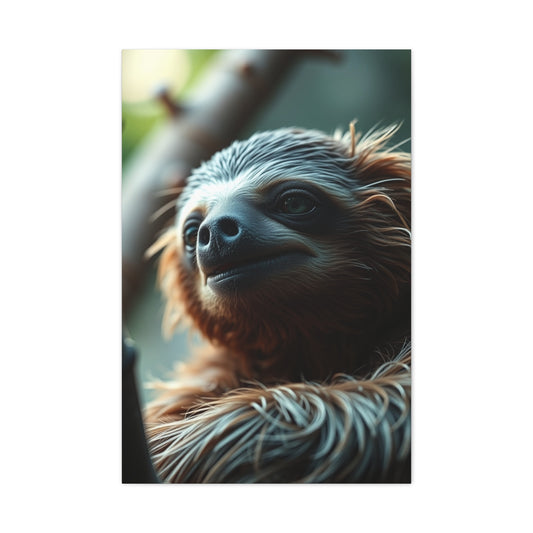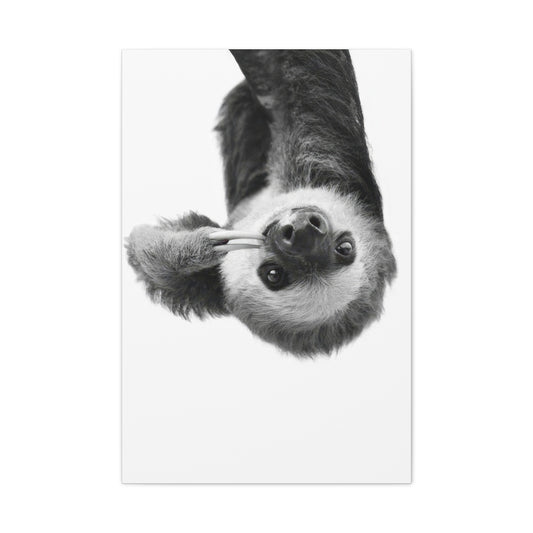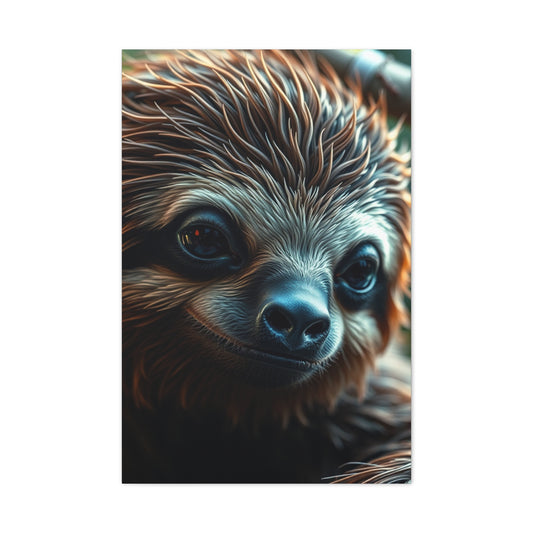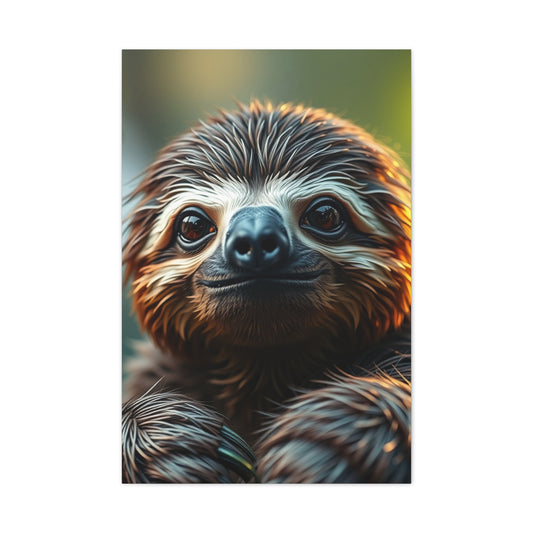The landscape of residential aesthetics undergoes perpetual metamorphosis, reflecting societal aspirations, technological advances, and evolving lifestyle preferences. Each passing year witnesses the emergence of innovative design philosophies that challenge conventional boundaries while honoring timeless principles of beauty and functionality. The current year heralds an unprecedented convergence of sustainability consciousness, technological integration, and artistic expression that promises to redefine domestic environments across the globe.
Contemporary homeowners increasingly seek spaces that transcend mere shelter, demanding environments that nurture well-being, express personal identity, and adapt to rapidly changing circumstances. This paradigm shift has catalyzed a renaissance in interior design thinking, producing trends that seamlessly blend ancient wisdom with cutting-edge innovation. The resulting aesthetic movements represent more than superficial stylistic changes; they embody fundamental transformations in how we conceptualize and inhabit our living spaces.
The eight transformative movements outlined herein represent the culmination of extensive research, industry analysis, and creative exploration by leading design professionals worldwide. These trends emerge from diverse cultural influences, technological breakthroughs, and environmental imperatives that collectively define the contemporary moment. Each movement offers unique opportunities for homeowners to create spaces that reflect their values, support their lifestyle aspirations, and provide enduring satisfaction through thoughtful implementation.
Understanding these emergent trends enables informed decision-making that transcends fleeting fashion while creating lasting value. The most successful interior transformations occur when homeowners recognize underlying principles rather than merely copying surface appearances, allowing for personalized interpretations that remain relevant across changing seasons and evolving preferences.
Nature-Integrated Design Philosophy Revolutionizes Indoor Environments
The biophilic design movement has evolved far beyond simple plant placement, encompassing sophisticated strategies for integrating natural elements throughout residential environments. This comprehensive approach recognizes the profound human need for connection with natural systems, addressing psychological well-being through carefully orchestrated environmental design that supports both physical health and emotional balance.
Contemporary biophilic implementations incorporate advanced understanding of circadian rhythms, air quality management, and sensory engagement through natural materials and processes. Living walls featuring diverse plant species create dynamic focal points while providing measurable air purification benefits. These vertical gardens require careful consideration of irrigation systems, lighting requirements, and plant selection to ensure long-term success while maintaining aesthetic impact.
Water features ranging from subtle fountains to elaborate aquatic displays introduce the therapeutic sounds and visual movement associated with natural waterways. These elements require sophisticated engineering to prevent moisture damage while maximizing sensory benefits. Recirculating systems with integrated filtration ensure water quality while minimizing maintenance requirements, allowing homeowners to enjoy the benefits without excessive upkeep burdens.
Natural lighting strategies maximize daylight penetration while providing appropriate controls for privacy and glare management. Skylights, clerestory windows, and light tubes bring sunshine deep into interior spaces, reducing dependence on artificial illumination while supporting natural biological rhythms. Automated systems can adjust window treatments throughout the day to optimize light levels for different activities and seasons.
Material selections emphasize organic textures, colors, and patterns that evoke natural environments without requiring actual living components. Stone surfaces, wood grains, and textile patterns inspired by botanical forms create cohesive aesthetic themes while providing practical durability. These materials often improve with age, developing patinas and wear patterns that enhance rather than diminish their visual appeal.
Indoor air quality management through both mechanical systems and plant-based purification creates healthier living environments that support respiratory function and overall wellness. Strategic plant placement optimizes oxygen production while filtering common household pollutants. Advanced ventilation systems ensure adequate fresh air exchange while maintaining energy efficiency and climate comfort.
Sophisticated Pattern Integration Through Advanced Wall Treatments
The modern renaissance in decorative wall treatments has transformed interior design, particularly through the sophisticated integration of patterns, textures, and finishes that transcend earlier limitations. Where wallpaper was once limited in durability, variety, and application techniques, today’s innovations combine artistry with cutting-edge manufacturing processes to deliver unparalleled aesthetic and functional possibilities. Advancements in digital printing allow for highly detailed imagery, precision pattern alignment, and a nearly infinite range of colors and textures. Sustainable materials, including recycled fibers, low-VOC adhesives, and eco-friendly substrates, have made these treatments both visually compelling and environmentally responsible. This evolution means wall surfaces can now act as focal points, architectural enhancements, and even sensory experiences that enrich a room’s atmosphere.
Evolution of Materials and Textural Innovations
The diversity of materials available for advanced wall treatments reflects a deliberate shift toward tactility and dimensionality. Grasscloth wallpapers, made from natural fibers such as jute, sisal, and hemp, introduce organic surfaces that interact with changing light conditions to produce subtle visual shifts throughout the day. These materials offer not only aesthetic charm but also acoustic dampening properties that contribute to a more serene interior environment. Other textured options include silk-blend wall coverings, cork-based designs, and woven metallic threads that provide shimmering depth. Unlike painted finishes, these materials create an interplay of light and shadow that adds richness to a room’s character. While their installation requires specialized skills to ensure precise seam alignment and consistent adhesive application, the resulting effect—an intricate, living surface—is worth the meticulous effort. Maintenance is typically straightforward, although some natural fibers require occasional dusting or vacuuming to maintain their original beauty.
Geometric Precision and Optical Enhancements
Geometric wall patterns represent a compelling fusion of mathematical structure and creative artistry. From minimalist grid lines to complex tessellations inspired by architecture and sacred geometry, these designs energize interiors while maintaining visual balance. Advanced printing technologies allow for precise line work and seamless pattern continuation, even on irregular walls. Strategic use of geometric patterns can create illusions that alter spatial perception—diagonal arrangements can elongate walls, vertical patterns can enhance perceived ceiling height, and symmetrical motifs can bring order to expansive surfaces.
Color selection within these patterns plays a crucial role in harmonizing with furnishings, textiles, and lighting schemes. Neutral geometric designs tend to recede, offering quiet sophistication, while bold contrasts introduce dynamism and modern flair. When paired with strategic lighting, such as wall washers or recessed LEDs, the three-dimensional qualities of certain patterns become more pronounced, further enhancing the room’s spatial narrative.
Metallic Luminosity and Specialty Finishes
Metallic accents have become a hallmark of high-end wall treatments, lending luxury and sophistication without overwhelming the space. Gold leaf overlays, brushed silver patterns, and oxidized copper details can be incorporated into wallpapers or hand-applied finishes to reflect light in subtle, atmospheric ways. These shimmering elements work particularly well in spaces designed for evening gatherings, such as dining rooms, lounges, and powder rooms, where controlled lighting can highlight their reflective qualities. The key to success lies in restraint—balancing metallic elements with matte or textured surfaces ensures that the result is opulent rather than ostentatious. Specialty finishes such as pearlescent glazes, mica-infused coatings, or heat-reactive inks push this approach further, creating interactive surfaces that shift in tone or sheen depending on viewing angle and illumination. Professional application often yields the best results, especially when working with fragile metallic foils or complex layering techniques.
Adaptive Solutions for Modern Lifestyles
One of the most transformative developments in wall treatment design is the advent of removable and repositionable wallpaper technologies. These peel-and-stick solutions allow for sophisticated wall transformations without long-term commitment or damage to underlying surfaces. Particularly beneficial for rental properties or spaces with frequently changing design themes, these products have advanced considerably in both appearance and durability. High-resolution printing ensures that even temporary installations can achieve a professional look, while improved adhesive formulas allow for easy removal without leaving residue.
The flexibility of repositionable wallpapers also encourages experimentation with bold patterns or unconventional color schemes, as the risk of permanent error is eliminated. Many homeowners and designers now use these solutions for accent walls, seasonal design updates, or even to test a visual concept before committing to a permanent installation.
Immersive Impact of Mural-Scale Installations
Large-scale mural wallpapers elevate wall treatments from decorative elements to immersive experiences. These expansive designs can transform an entire wall into a panoramic landscape, an abstract artwork, or a detailed architectural tableau. Unlike repeating patterns, mural wallpapers tell a singular visual story, serving as a focal point that defines the room’s atmosphere. Themes range from hyper-realistic photographic imagery to stylized botanical illustrations, urban cityscapes, and abstract color fields. The visual scale of these installations can alter a room’s perceived proportions—expansive landscapes can create depth, while vertical forest scenes can draw the eye upward.
Professional installation is strongly recommended for mural-scale work, as precise alignment and uninterrupted application are critical to preserving the intended impact. In many cases, these murals are custom-designed to fit exact wall dimensions, ensuring that every detail aligns with the architectural features of the space.
Earth-Toned Sophistication Defines Contemporary Color Palettes
The movement toward earthen color schemes reflects broader cultural shifts toward sustainability, authenticity, and connection with natural environments. These sophisticated palettes move beyond simple beige and brown combinations to embrace complex color relationships inspired by geological formations, seasonal transitions, and botanical diversity.
Terracotta and clay-inspired hues provide warmth and richness while maintaining neutrality that supports diverse decorating approaches. These colors work particularly well in spaces with abundant natural light, where their subtle variations become apparent throughout the day. Layering different terracotta tones creates depth and visual interest without requiring bold contrasts or dramatic color combinations.
Sage greens and muted botanical colors create calming environments that support relaxation and concentration. These hues pair beautifully with natural wood tones and stone materials while providing sufficient color interest to avoid monotony. Different green values can be combined to create sophisticated monochromatic schemes that remain visually engaging over time.
Warm grays and mushroom tones offer contemporary alternatives to stark white and cool gray color schemes that dominated recent years. These nuanced neutrals provide sophisticated backgrounds for artwork, furnishings, and decorative accessories while creating cozy, inviting atmospheres. The complexity of these colors prevents them from appearing flat or institutional.
Dusty blues and weathered denim colors introduce cool elements that balance warmer earth tones while maintaining the overall natural aesthetic. These blues work particularly well in bedrooms and bathrooms, where their calming properties support rest and relaxation. Combining various blue values creates depth and visual movement without requiring additional color families.
Ochre and amber accents provide focal points within primarily neutral schemes while maintaining harmony with earth-based color palettes. These warm yellows and oranges can be introduced through artwork, textiles, or small decorative objects without overwhelming the overall composition. Their intensity allows for dramatic impact with minimal application.
Luxurious Textile Applications Create Sensory-Rich Environments
The emphasis on tactile experiences within residential interiors has elevated textile applications beyond simple furnishing to architectural elements that define spatial character and occupant comfort. Contemporary approaches to fabric integration recognize the psychological impact of texture while addressing practical considerations of durability, maintenance, and acoustic performance.
Floor-to-ceiling upholstered headboards create dramatic focal points in bedrooms while providing acoustic dampening that improves sleep quality. These installations require careful structural support and professional installation to ensure safety and longevity. Fabric selections must balance aesthetic preferences with practical considerations including stain resistance, fade resistance, and cleanability.
Geometric upholstery patterns introduce visual rhythm and movement while maintaining sophisticated aesthetic appeal. These designs often incorporate mathematical progressions or architectural motifs that create coherent relationships with other design elements throughout the space. Bold geometric patterns work best when balanced with simpler surrounding elements to avoid visual chaos.
Layered textile installations create depth and visual complexity through combinations of different fabrics, textures, and patterns within cohesive color schemes. Window treatments might incorporate multiple fabric types, from sheer panels for light filtering to heavy draperies for privacy and insulation. These layered approaches provide functional flexibility while creating rich visual compositions.
Custom upholstery solutions allow for precise coordination between furnishings and architectural elements while ensuring proper fit and proportions for specific spaces. Skilled upholsterers can create unique pieces that perfectly complement room dimensions and design themes while providing superior comfort and durability compared to mass-produced alternatives.
Performance fabrics incorporating advanced technologies provide luxury appearance with enhanced practicality for high-use areas and families with children or pets. These materials resist staining, fading, and wear while maintaining the visual and tactile qualities associated with natural fibers. Proper specification ensures optimal performance without compromising aesthetic goals.
Chromatic Vitality Energizes Contemporary Living Spaces
The strategic incorporation of vibrant color accents provides psychological stimulation and personal expression within primarily neutral design schemes. This approach allows homeowners to introduce favorite colors and reflect personal taste without committing to overwhelming color saturation that might become tiresome over time.
Jewel-toned accents including emerald, sapphire, and ruby create luxurious focal points that elevate the perceived value and sophistication of interior spaces. These rich colors work particularly well in dining rooms and living areas where social interaction benefits from energetic color psychology. Strategic placement through artwork, decorative objects, or small furniture pieces allows for significant impact without major renovation.
Sunset-inspired color combinations incorporating oranges, pinks, and corals create warm, welcoming environments that support relaxation and social connection. These colors can be introduced through textiles, lighting, or decorative accessories that can be easily changed as preferences evolve. The psychological warmth of these hues makes them particularly suitable for entertainment areas and family spaces.
Electric blues and teals provide contemporary alternatives to traditional cool color accents while maintaining freshness and vitality. These colors pair beautifully with neutral backgrounds and natural materials while providing sufficient intensity to energize spaces without overwhelming inhabitants. They work particularly well in home offices and creative spaces where mental stimulation is desired.
Tropical greens inspired by exotic foliage create connections with nature while providing color excitement that neutral schemes alone cannot achieve. These vibrant greens can be introduced through large plants, artwork, or decorative elements that bring life and energy to interior environments. The association with growth and vitality makes these colors psychologically uplifting.
Magenta and fuchsia accents provide bold statements that reflect confidence and creativity while remaining sophisticated when properly integrated. These powerful colors require careful balance and restraint to avoid overwhelming spaces, but when successfully implemented, they create memorable environments that reflect personal style and artistic sensibility.
Reflective Surfaces Transform Spatial Perception and Light Distribution
The strategic deployment of mirrors and reflective surfaces transcends traditional decorating approaches to become sophisticated tools for manipulating spatial perception, light distribution, and visual complexity within residential environments. Contemporary mirror applications recognize both functional and aesthetic potentials while addressing modern lifestyle requirements.
Three-dimensional mirror installations create sculptural elements that serve as artwork while providing the practical benefits of reflective surfaces. These installations often incorporate geometric patterns or organic forms that cast interesting shadows while reflecting light throughout spaces. Professional installation ensures proper support and positioning for optimal visual impact and safety.
Antique and vintage mirrors introduce historical character and craftsmanship while providing timeless appeal that transcends temporary decorating trends. These pieces often feature elaborate frames and specialized glass that creates unique reflective qualities impossible to achieve with contemporary manufacturing. Careful restoration may be required to ensure optimal function while preserving historical integrity.
Mirrored furniture and architectural elements create luminous effects that make spaces appear larger while adding glamour and sophistication. Mirrored backsplashes in kitchens and bathrooms provide practical functionality while creating visual expansion and light multiplication. These applications require careful consideration of maintenance requirements and appropriate placement to avoid glare or unflattering reflection angles.
Convex and concave mirrors create interesting visual distortions that add playfulness and artistic interest while serving practical functions in hallways and tight spaces. These specialty mirrors often serve as safety devices in addition to their decorative functions, providing views around corners or blind spots while creating unique aesthetic effects.
Smart mirrors incorporating technology for weather displays, news updates, or entertainment provide contemporary functionality while maintaining traditional reflective capabilities. These devices require electrical connections and wireless connectivity but offer convenience and information access that traditional mirrors cannot provide. Integration should maintain aesthetic coherence while maximizing technological benefits.
Botanical Integration Creates Living Architectural Elements
The elevation of plant life from simple decoration to integral architectural components represents a sophisticated understanding of the relationships between built and natural environments. Contemporary approaches to indoor gardening incorporate horticultural expertise with design sensibility to create living elements that enhance rather than compete with architectural features.
Ceiling-suspended installations create floating gardens that provide visual interest at eye level while maximizing floor space efficiency. These installations require careful consideration of structural support, irrigation systems, and plant selection to ensure long-term success. Automated watering systems can provide consistent care while minimizing maintenance requirements for busy homeowners.
Terrarium installations ranging from small tabletop compositions to room-sized enclosures create controlled environments for exotic plant species while providing educational and aesthetic benefits. These installations can incorporate specialized lighting, humidity control, and temperature management to support diverse plant communities that would not survive in typical indoor conditions.
Hydroponic growing systems integrate food production with decorative gardening while providing educational opportunities and sustainable living practices. These systems can produce herbs, vegetables, and microgreens for culinary use while creating attractive displays that demonstrate growing processes. LED growing lights ensure adequate illumination for plant health while consuming minimal energy.
Seasonal plant rotation programs maintain visual interest throughout the year while accommodating the natural life cycles of different species. Spring bulbs, summer flowering plants, autumn foliage, and winter evergreens can be strategically rotated to provide continuous color and texture variation. This approach requires advance planning but provides dynamic environments that change with natural seasons.
Air plant displays eliminate soil requirements while providing unique sculptural possibilities for plant integration. These epiphytic species can be mounted on walls, suspended from ceilings, or arranged in glass containers while requiring minimal care and no traditional planting medium. Creative display methods can transform air plants into living artwork that changes slowly over time.
Artistic Expression Through Wall-Mounted Installations
The transformation of walls from simple background surfaces to active artistic canvases reflects contemporary approaches to personal expression and spatial enhancement. Modern wall art applications incorporate diverse media, technologies, and installation methods that create immersive environments while reflecting individual taste and cultural interests.
Large-scale photography installations create dramatic focal points while personalizing spaces with meaningful imagery. These installations often incorporate special printing techniques and mounting systems that ensure longevity and professional appearance. Subject matter ranging from family photographs to artistic landscapes can transform ordinary walls into gallery-quality displays.
Mixed-media compositions combining painting, sculpture, and digital elements create unique artistic statements that cannot be replicated through mass production. These installations often incorporate three-dimensional elements that cast shadows and create visual depth beyond traditional flat artwork. Commission pieces ensure perfect fit and coordination with specific design schemes.
Gallery wall arrangements featuring multiple artworks create dynamic compositions that can evolve over time as collections grow and preferences change. Professional hanging systems allow for easy rearrangement while ensuring proper spacing and alignment. Lighting systems can highlight individual pieces while creating overall ambient illumination.
Interactive digital displays incorporate technology to create changing artistic presentations that respond to time, season, or inhabitant preferences. These installations can display rotating collections of artwork, family photographs, or abstract compositions while providing entertainment and information functions. Proper integration ensures aesthetic coherence while maximizing technological capabilities.
Mural installations by professional artists create unique environments that reflect personal interests while adding significant value to residential properties. These large-scale works require careful planning and execution but provide impact impossible to achieve through smaller artwork. Subject matter and style can be customized to complement architectural features and design themes.
Implementation Strategies for Successful Trend Integration
Successfully incorporating contemporary design trends requires careful planning, realistic budgeting, and systematic implementation that prioritizes long-term satisfaction over immediate gratification. The most effective approaches balance trendy elements with timeless foundations while maintaining coherent aesthetic vision throughout the process.
Professional design consultation provides valuable expertise in trend interpretation, space planning, and product specification while helping homeowners avoid costly mistakes and ensure coordinated results. Experienced designers understand how to adapt general trends to specific spaces, lifestyles, and budgets while maintaining aesthetic integrity and functional effectiveness.
Phased implementation allows for gradual transformation that accommodates budget constraints while providing opportunities to evaluate each change before proceeding. Beginning with smaller, reversible changes provides confidence and experience before committing to more significant renovations. This approach also allows for trend refinement and personalization over time.
Quality investment prioritization focuses resources on elements that provide maximum impact and longevity while economizing on easily changed accessories and decorative elements. Structural improvements, major appliances, and high-use furnishings deserve premium investment while trendy accessories can be acquired more economically and replaced as preferences evolve.
Trend adaptation rather than literal copying ensures that contemporary movements enhance rather than overwhelm existing design schemes while reflecting personal taste and lifestyle requirements. The most successful implementations interpret trend principles rather than replicating specific examples, resulting in unique environments that remain fresh and relevant over time.
Professional installation for complex elements ensures safety, functionality, and aesthetic success while often providing warranties and ongoing support that justify additional expense. Electrical work, plumbing modifications, and structural changes require licensed professionals while simpler decorative installations may be suitable for skilled DIY enthusiasts.
Sustainable Practices Within Contemporary Design Movements
Environmental consciousness increasingly influences design trend development and implementation, reflecting broader cultural shifts toward sustainability and responsible resource utilization. Contemporary approaches balance aesthetic goals with environmental impact while providing long-term value that justifies initial investment in sustainable alternatives.
Reclaimed and recycled materials provide character and history while reducing environmental impact and often offering superior quality compared to newly manufactured alternatives. Salvaged wood, vintage fixtures, and repurposed furnishings require careful selection and possible restoration but provide unique aesthetic qualities and environmental benefits.
Energy-efficient lighting and appliances support environmental goals while providing superior performance and reduced operating costs over their lifespans. LED lighting systems, smart controls, and high-efficiency appliances integrate seamlessly with contemporary design trends while supporting sustainable living practices.
Low-impact manufacturing processes and local sourcing reduce transportation emissions while supporting regional economies and craftsmanship traditions. Locally produced materials and furnishings often provide superior customization options while reducing delivery times and supporting community businesses.
Durable material selection prioritizes longevity over initial cost savings while ensuring that trend implementations remain attractive and functional for extended periods. Quality materials often improve with age while cheaper alternatives may require frequent replacement, ultimately costing more and creating additional waste.
Indoor air quality considerations influence material selection and installation methods while supporting occupant health and well-being. Low-VOC paints, natural fiber textiles, and formaldehyde-free building materials create healthier indoor environments while often providing superior aesthetic qualities.
Conclusion
Contemporary design trends increasingly incorporate technological capabilities while maintaining human-centered design principles that prioritize comfort, functionality, and aesthetic appeal. Successful technology integration enhances rather than dominates living environments while providing convenience and efficiency benefits.
Smart home systems provide integrated control of lighting, climate, security, and entertainment systems while maintaining design coherence and user-friendly operation. Wireless protocols and concealed infrastructure minimize visual impact while maximizing convenience and energy efficiency. Professional programming ensures optimal performance and ease of use.
Automated systems for plant care, lighting control, and climate management reduce maintenance requirements while ensuring optimal conditions for both plants and inhabitants. These systems can adapt to seasonal changes, occupancy patterns, and individual preferences while providing consistent performance without constant manual adjustment.
Wireless charging integration eliminates cable clutter while providing convenient device charging throughout living spaces. Furniture-integrated charging stations and concealed charging pads maintain clean aesthetics while ensuring devices remain powered and accessible. Multiple charging zones accommodate modern multi-device lifestyles.
Sound system integration provides high-quality audio throughout living spaces while remaining visually discrete and acoustically appropriate for different activities and times of day. Ceiling-mounted speakers, wireless connectivity, and zone control allow for customized audio experiences without visual intrusion or disturbing others.
Security integration including cameras, sensors, and access controls provides peace of mind while maintaining privacy and aesthetic appeal. Contemporary systems offer smartphone connectivity and cloud storage while avoiding the institutional appearance of traditional security equipment.
The convergence of these eight transformative trends creates unprecedented opportunities for creating residential environments that support contemporary lifestyles while expressing personal values and aesthetic preferences. Successful implementation requires understanding underlying principles rather than superficial copying, allowing for personalized interpretations that remain relevant across changing circumstances and evolving preferences. The most effective approaches balance trendy elements with timeless foundations while maintaining coherent vision throughout the transformation process, resulting in homes that provide enduring satisfaction and reflect the unique personalities of their inhabitants.
























